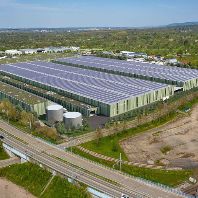As the global economy continues to evolve, investors are closely monitoring the Central and Eastern European (CEE) market. In 2023, Slovakia experienced a decline in investment volumes, while the Czech Republic and Poland also saw a decrease in activity. However, there are positive signs for the region, with stable property values and reduced interest rate fluctuations indicating promising market growth in the coming years. Here is an overview of a CEE Investment Market Perspective report by JLL and iO Partners.
CEE real estate economic recovery and expectations:
A review of 2023
In 2023, the global investment market faced an increase in borrowing costs and a potential recession in major economies. This reduced investor activity in the commercial real estate market, and uncertainty regarding price adjustments, made market players hesitant to bid in most sectors. Additionally, the disruption of the valuation process due to the lack of prime transaction evidence led to sellers' price expectations exceeding what buyers were likely to offer, resulting in a subdued transaction volume.
Poland
Poland's total transaction volume has reached €2.0b, the lowest since 2009. The industrial sector recorded almost half of the turnover, with €967m of transaction volume. NREP's acquisition of an 80% stake in 7R generated the lion's share of the turnover, marking a milestone transaction in the last 12 months.
Czech Republic
In 2023, Czech Republic's total investment volume was c, €1.3b, a 27% decrease from the previous year. Czech investors were responsible for over 70% of the total investment volume, with the retail sector dominating at 39%.
Hungary
Hungary's 2023 total investment volume was €610m, down 30% YoY, with offices being the most active asset class (40%). Hungarian buyers accounted for 80% of transactions.
Romania
Property investment in Romania was €500m in 2023, 60% lower than in 2022. Retail transactions dominated with 58% of the total, followed by office (17%). Local investors were responsible for only 23% of the investment volume.
Slovakia
In 2023, investment volumes in Slovakia totaled €660 million, down 40% YoY. However, compared to the five-year average annual volumes, the decline is a more moderate 17%.
CEE Investment Volumes 2016 – 2023
Investors from Central and Eastern Europe were active despite a cautious approach by some global participants. There are positive signs such as reduced interest rate fluctuations, decreasing inflation rates, and stable property values that will drive market growth in the upcoming year.
Economic Risk
Poland's economy is expected to experience a resurgence in growth from 2024 to 2025, driven by an increase in private consumption, investment expansion, and successful export performance. Inflation is projected to diminish from 2023 onwards, but the gradual reduction will be influenced by the withdrawal of anti-inflation measures and substantial wage growth. The Czech Republic remains one of the most stable markets in Central and Eastern Europe due to its conservative fiscal and monetary policies and a low government debt. Hungary outperformed the Eurozone in 2022, but the anticipated economic slowdown occurred in 2023. Romania's growth slowed to 2.2% due to high inflation, tight financial conditions, and lower external demand. In contrast, the Slovak economy has proven its resilience, and there is a promising upward trend for the coming years, with a growth rate projected to exceed 2% in 2025.
Investment Overview
The Polish investment market experienced a significant increase in borrowing costs in 2023, leading to a reduction in investor activity in the commercial real estate sector. The uncertainty surrounding price adjustments caused many market players to be reluctant to bid actively, as they struggled to adopt assumptions on potential exit strategies. Despite these difficulties, the market is still facilitating transactions, albeit at a slower pace than in 2022. In the Czech Republic, the total investment volume in 2023 represented a 27% decrease year-on-year. While the office sector experienced a 56% decrease in investment volume compared to 2022, retail remained the dominant sector throughout the year. In Hungary, buyers exercised caution due to concerns about the overall market fundamentals, with the annual investment activity falling significantly below the long-term average. Romania's liquidity was significantly impacted by global headwinds, with a lack of local investors. The office sector emerged as the primary focus in Slovakia, accounting for 70% of total volumes.
Read the full CEE Investment Market Perspective 2023 report for more information.
Content distributed by iO Partners.
Image source - Pexels.















